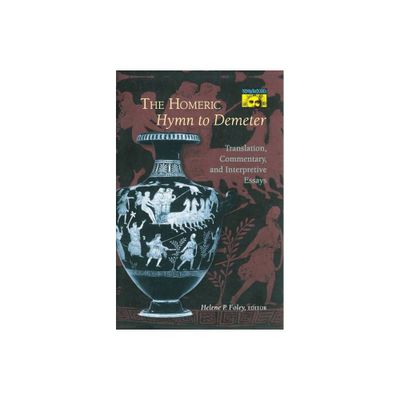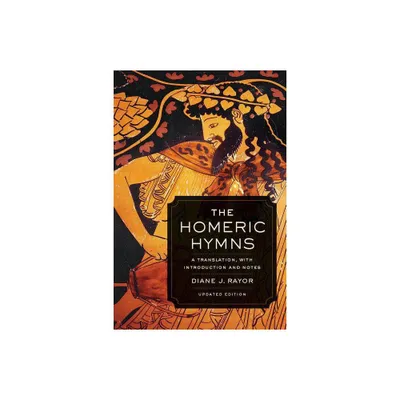Home
The Narcissus and the Pomegranate: An Archaeology of the Homeric Hymn to Demeter
Loading Inventory...
Barnes and Noble
The Narcissus and the Pomegranate: An Archaeology of the Homeric Hymn to Demeter
Current price: $94.95


Barnes and Noble
The Narcissus and the Pomegranate: An Archaeology of the Homeric Hymn to Demeter
Current price: $94.95
Loading Inventory...
Size: OS
*Product Information may vary - to confirm product availability, pricing, and additional information please contact Barnes and Noble
Offering a new understanding of the
Hymn to Demeter,
Ann Suter provides an analysis of methodological approaches, reconciling the seemingly disparate pieces of the complex narrative of the hymn. Examining evidence from other versions of the hymn's myths, as well as from Greek religion, linguistics, and archaeology, she lends a new understanding to the relationships among the hymn's personagesPersephone, Demeter, Hades, and Zeusas they developed and crystallized, providing a new chronology for the cults of Demeter and Persephone at Eleusis.
The author analyzes the traditional language of the hymn and Persephone's retelling of her story to Demeter, arguing that the hymn involves an earlier tale of Demeter and Persephone that predates the seventh century. Suter uses anthropological applications to illustrate that the story of Persephone's abduction does not reflect a female initiation rite into adulthood, as has been argued, but rather an
hieros gamos
. These methodologies point to the conclusion that Persephone was once a powerful goddess in her own right, independent of Hades and of Demeter as well. To test the accuracy of these possibilities, the book next examines evidence from outside the hymn. Other versions of the two myths in the hymn support the idea that these mythsPersephone's abduction and Demeter's nursing of Demophoönwere once separate and were late combined to create a new story. Evidence from the chief archaeological sites, from vase painting and other artistic forms is provided to enhance the argument. Thus the evidence from outside the hymn supports the conclusions of the textual analyses, giving surprising substantiation that the hymn itself commemorates the early days of the worship of the goddesses as a mother/daughter pair.
This book will be of particular interest to scholars of religious history, art history, archaeology, and literature. It is also accessible to the general reader interested in Greek literature, myths, and religion.
Ann Suter is Associate Professor of Classical Studies, University of Rhode Island.
Hymn to Demeter,
Ann Suter provides an analysis of methodological approaches, reconciling the seemingly disparate pieces of the complex narrative of the hymn. Examining evidence from other versions of the hymn's myths, as well as from Greek religion, linguistics, and archaeology, she lends a new understanding to the relationships among the hymn's personagesPersephone, Demeter, Hades, and Zeusas they developed and crystallized, providing a new chronology for the cults of Demeter and Persephone at Eleusis.
The author analyzes the traditional language of the hymn and Persephone's retelling of her story to Demeter, arguing that the hymn involves an earlier tale of Demeter and Persephone that predates the seventh century. Suter uses anthropological applications to illustrate that the story of Persephone's abduction does not reflect a female initiation rite into adulthood, as has been argued, but rather an
hieros gamos
. These methodologies point to the conclusion that Persephone was once a powerful goddess in her own right, independent of Hades and of Demeter as well. To test the accuracy of these possibilities, the book next examines evidence from outside the hymn. Other versions of the two myths in the hymn support the idea that these mythsPersephone's abduction and Demeter's nursing of Demophoönwere once separate and were late combined to create a new story. Evidence from the chief archaeological sites, from vase painting and other artistic forms is provided to enhance the argument. Thus the evidence from outside the hymn supports the conclusions of the textual analyses, giving surprising substantiation that the hymn itself commemorates the early days of the worship of the goddesses as a mother/daughter pair.
This book will be of particular interest to scholars of religious history, art history, archaeology, and literature. It is also accessible to the general reader interested in Greek literature, myths, and religion.
Ann Suter is Associate Professor of Classical Studies, University of Rhode Island.












